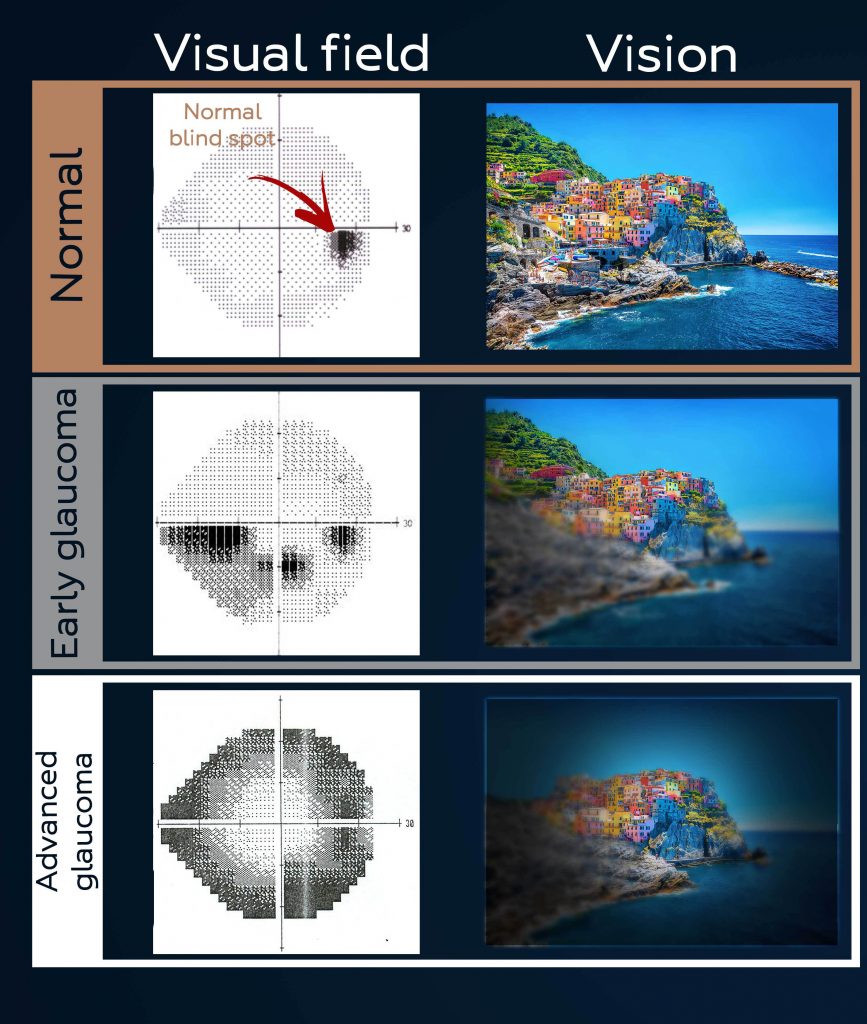Visual Field Test – Perimetry

Visual field test (perimetry) is a simple and painless test to measures your all-around vision. It measures how much ‘side vision’ you have and it is used to help diagnose conditions like glaucoma. It helps determine the full horizontal and vertical range of what you are able to see peripherally. It is performed to analyze patient visual field.
At Smile Laser Eye Centre Multan, visual field test is performed at the most advanced automated visual field analyzer.
The purpose of a visual field test
The purpose of a visual field test is to assess the potential presence of blind spots. These blind spots indicate signs of a variety of eye diseases. Depending on the size and shape of the blind spot, it could be linked to optic nerve damage caused by glaucoma. Brain abnormalities caused by strokes or tumors can also affect the visual field. The visual field test is also used to determine the location of the stroke.
Types of visual field test
There are two main types of testing methods:
Moving targets: In this test lighted targets being moved from outside of your side vision and in towards the centre of your vision until you see the target. As soon as the target appears, you would indicate this by pressing on an indicator button.
Fixed targets: It involves fixed targets. these appear more suddenly into different areas of your vision field (onto a screen). As the target appears, you would indicate this to the doctor, again usually done by pressing a button.
How the tests are performed
Confrontational visual field exam: This test is typically used as a preliminary examination, used for screening purposes. In its simplest form, one eye is covered while the other fixates on a target object (eg, doctors open eye) and then you are asked to describe what you see in the far edges of your field of view, or the doctor moves their hand in and out of your visual field to determine the range of side vision.
The comprehensive formal types of visual field tests are used for measuring the visual field loss:
- Automated perimetry – measures responses to the presence of objects in different areas of your field of view.
- Frequency doubling perimetry – based on an optical illusion appearing on-screen with vertical bars in contrasting colours at different frequences, indicating response to light sensitivity in the retina and any optic nerve damage.
- Electroretinography – test measuring the electrical activity generated by the photoreceptor cells in the retina
Each eye is tested separately. The tests are repeated at appropriate time intervals to determine if vision loss is progressing or remaining stable. If you are diagnosed with a particular disorder or disease, such as galucoma, visual field tests become a routine part of your treatment.
Visual field defects in glaucoma

Visual field defects in glaucoma are caused by damage to the sensitive nerves at the back of the eye, in the layer known as the retina. This is due to a slow and painless rise in pressure inside the eye, which is why your doctor will also check the pressure in each eye. The visual field defects can spread over time and could lead to tunnel vision, where only a small central area of vision is left.
People with early signs of glaucoma may just have lowered sensitivity to light in one part of their visual field. For people with progressed glaucoma they may have an arc-shaped area where the eye is less sensitive to light.
Fortunately, there is a range of ways to treat glaucoma and prevent this from happening. Treatment can slow or stop the progression of sight loss if visual field problems are detected early.
If you have been diagnosed with glaucoma and given treatment, you will be asked to continue the treatment and return for regular checks. Your visual fields will be assessed every time you have a check-up so the doctor can see if the treatment is working.